Triangle Centers
Circumcenter:
The perpendicular bisectors of a triangle are concurrent . And the point of their concurrence is known as "Circumcenter". Basically, it is represented by ''.
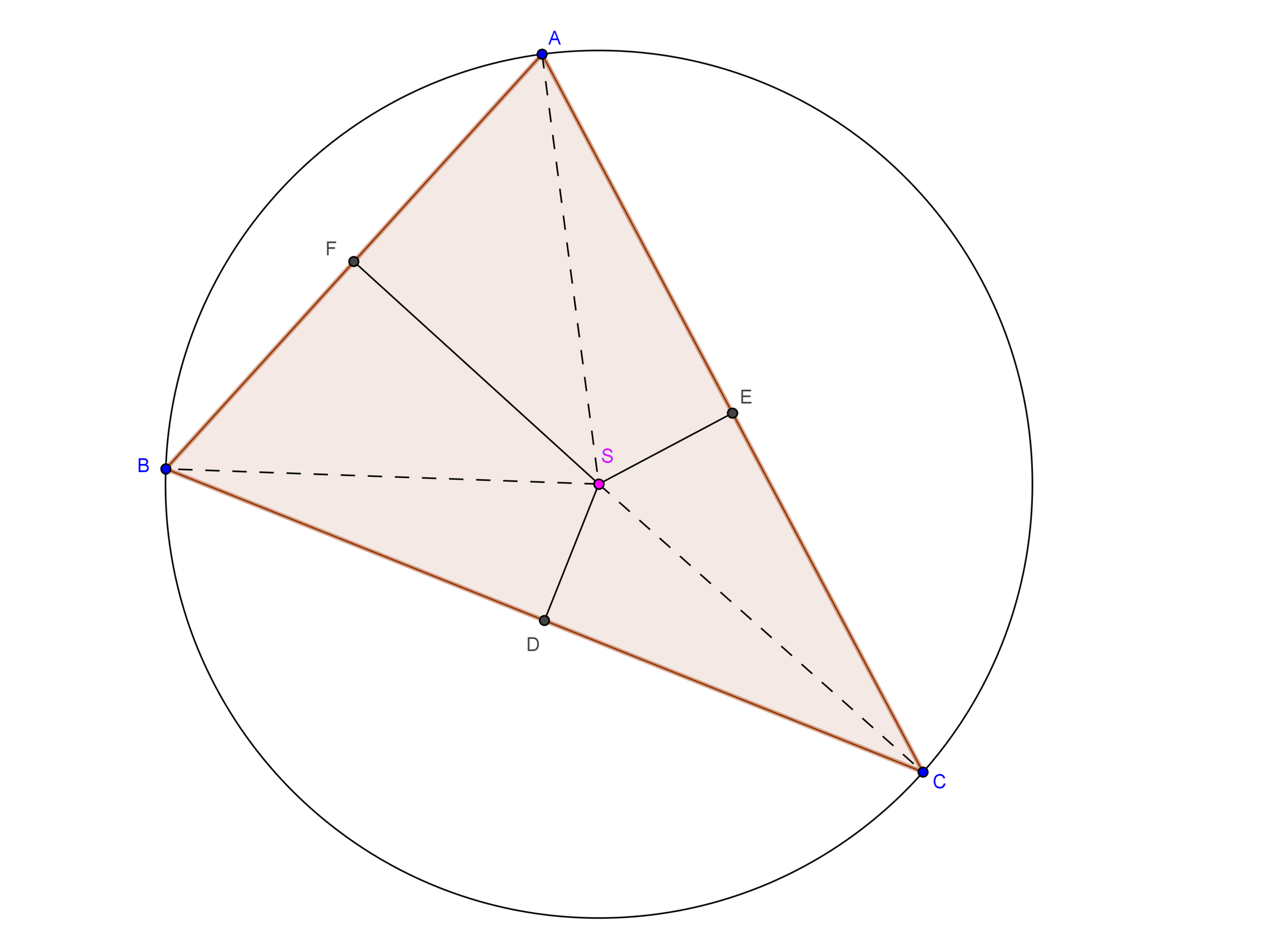
The circumcenter is equidistant from all the three vertices. So, how can we say that the perpendicular bisectors are concurrent and circumcenter is equidistant from all the three vertices. So, we shall prove that. But how??? So, first draw the perpendicular bisectors of sides and . Let they intersect at . Now, drop a perpendicular from onto . Let this perpendicular meet at . So, it is sufficient to prove that is the perpendicular bisector of .
So, observe that (why?) and . So, . So, . Similarly proceeding for and , we obtain . This implies that . So, is isosceles. Then what can we say about the altitude of . It is also the perpendicular bisector of the side .(But why?). So, we have finally proved.
So, let's move onto next topic.
Incenter:
The internal angular bisectors of the angles of the triangle are concurrent. The point of concurrence of these angular bisectors is known as "Incenter". It is represented by the letter ''. And the radius of the incircle is the perpndicular distance from Incenter to any one the side.
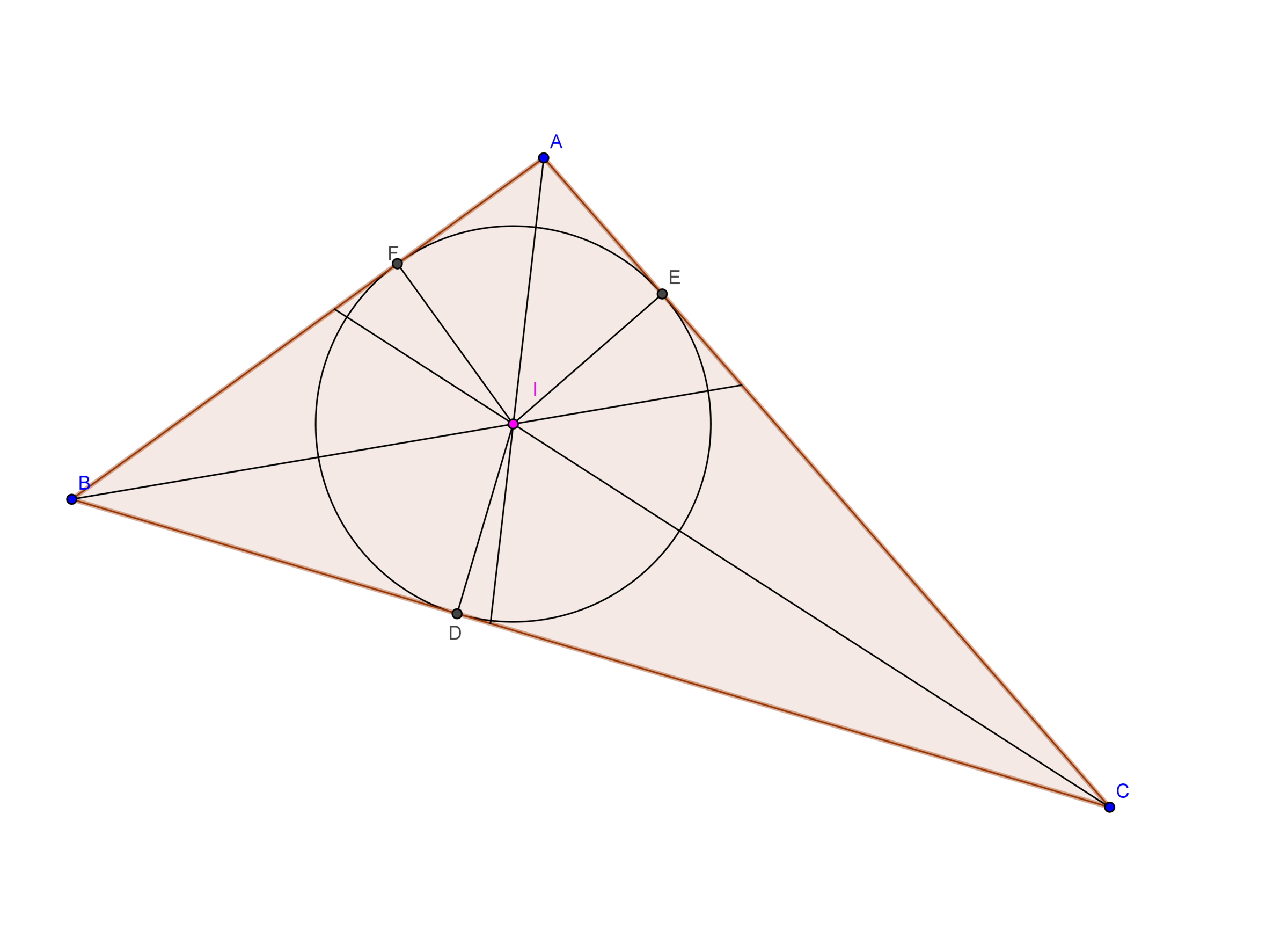
So what is the special property of this Incenter. Actually, it is equidistant from all the sides of the triangle. So, How can we prove these things as like above? Can we use the similar strategy to that? Of Course, we can prove this using the above strategy.
So,let us first draw the angular bisectors of and . Let they meet at . So, if we prove that is the angular bisector of , we are done. But how? Let , and be the perpendiculars from onto the sides , and .
Observe that, and . So, . So, . Applying similar procedure for and , we get . This implies that . But, . So, . But what can we infer from this?? Oops, actually we're done.(How? Think yourselves). So, we have finally proved this. Are you feeling bored? I think you won't. So, Let's move on.
Orthocenter:
So, what is this orthocenter? Can you guess it? Okay, right. Actually, Orthocenter is the point of concurrence of the altitudes of triangle. It is generally represented by the letter '.
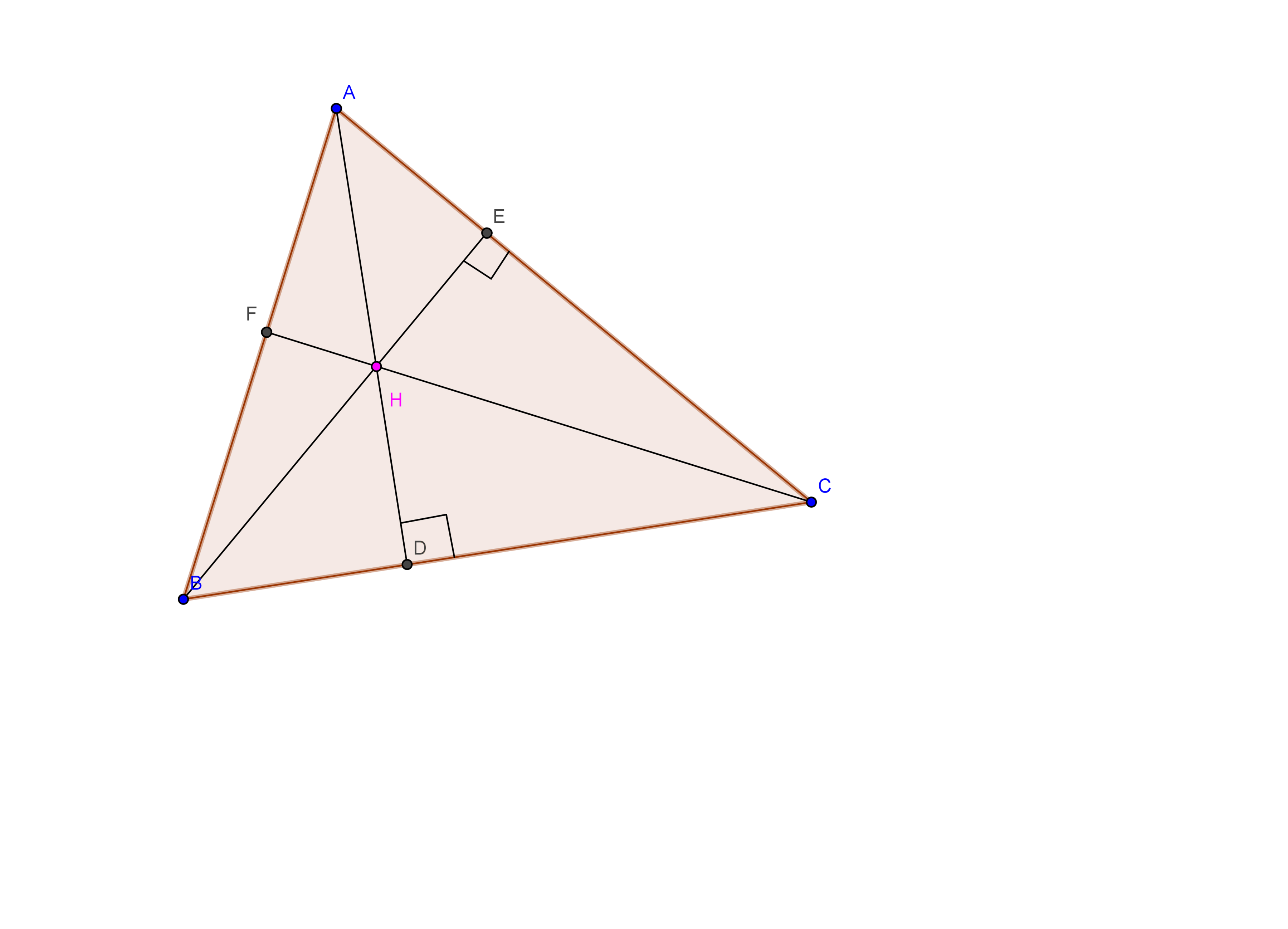
So, how to prove this? Apply the same strategy as before. In , let and be the altitudes through and onto and respectively. Let they meet at the point ''. Extend to meet at . So, we have to prove that is perpendicular to .
Since, , it infers that is cyclic quadrilateral. Also, . So, is cyclic quadrilateral. Now, . But, . So, . Now, . So, is cyclic. This implies that . Phewww!! We're done. Finally proved it. Did you observe that the orthocenter of is the incenter of .(But How? Try it yourselves)
Before moving to Centroid, let us first discuss about Ceva's Theorem.
Ceva's Theorem:
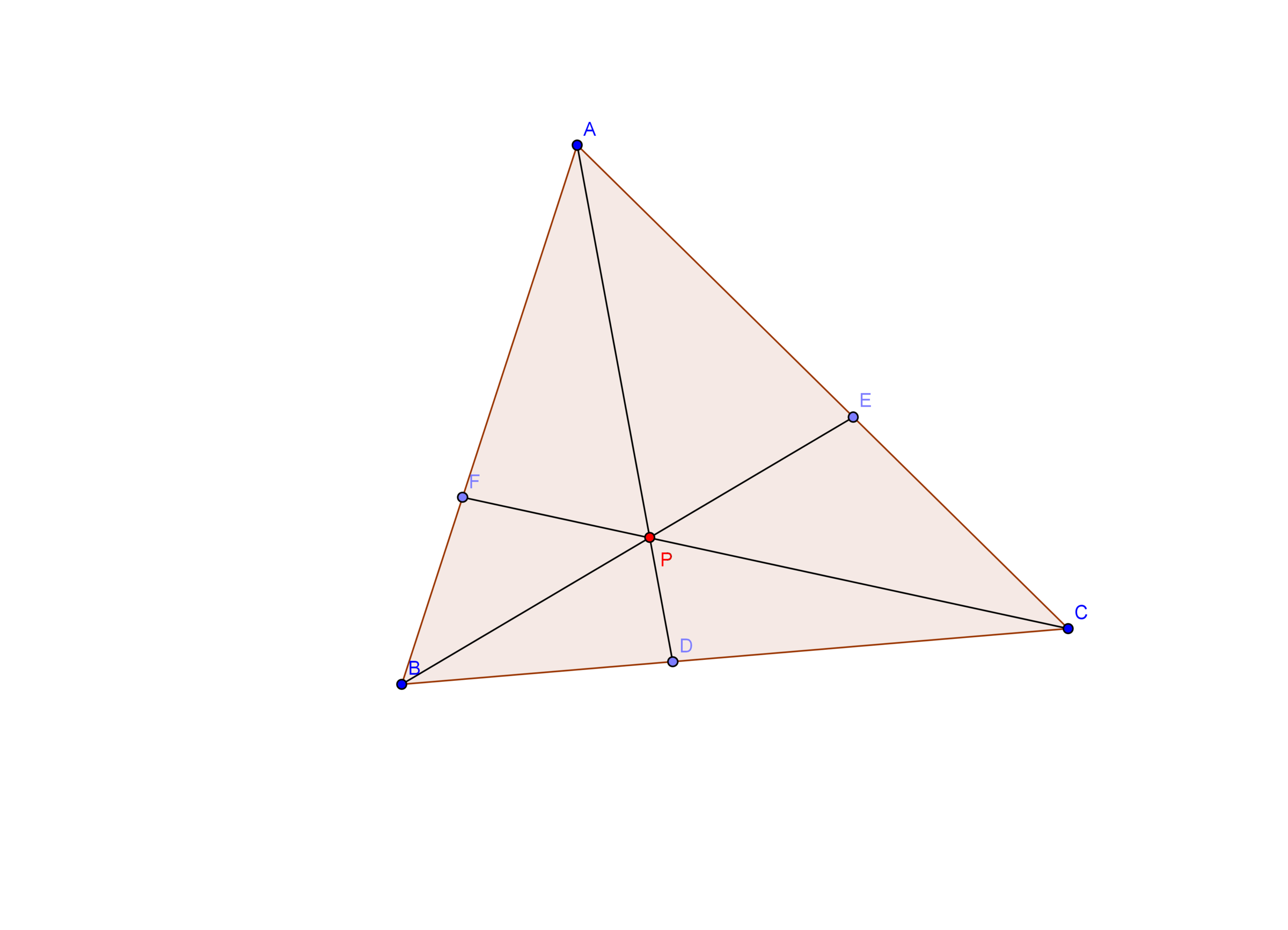
Consider three concurrent line , and which are concurrent at . Then,
Let us prove this. Draw a line parallel to through . Extend and to meet this parallel line at and . We can observe that there are so many similar triangles formed here.
As and , we have and .
As and . So, and .
This implies that . So, .
. Hence, proved.
Let us move onto centroid.
Centroid:
Centroid is the point of concurrence of medians of a triangle. It is generally denoted by ''.
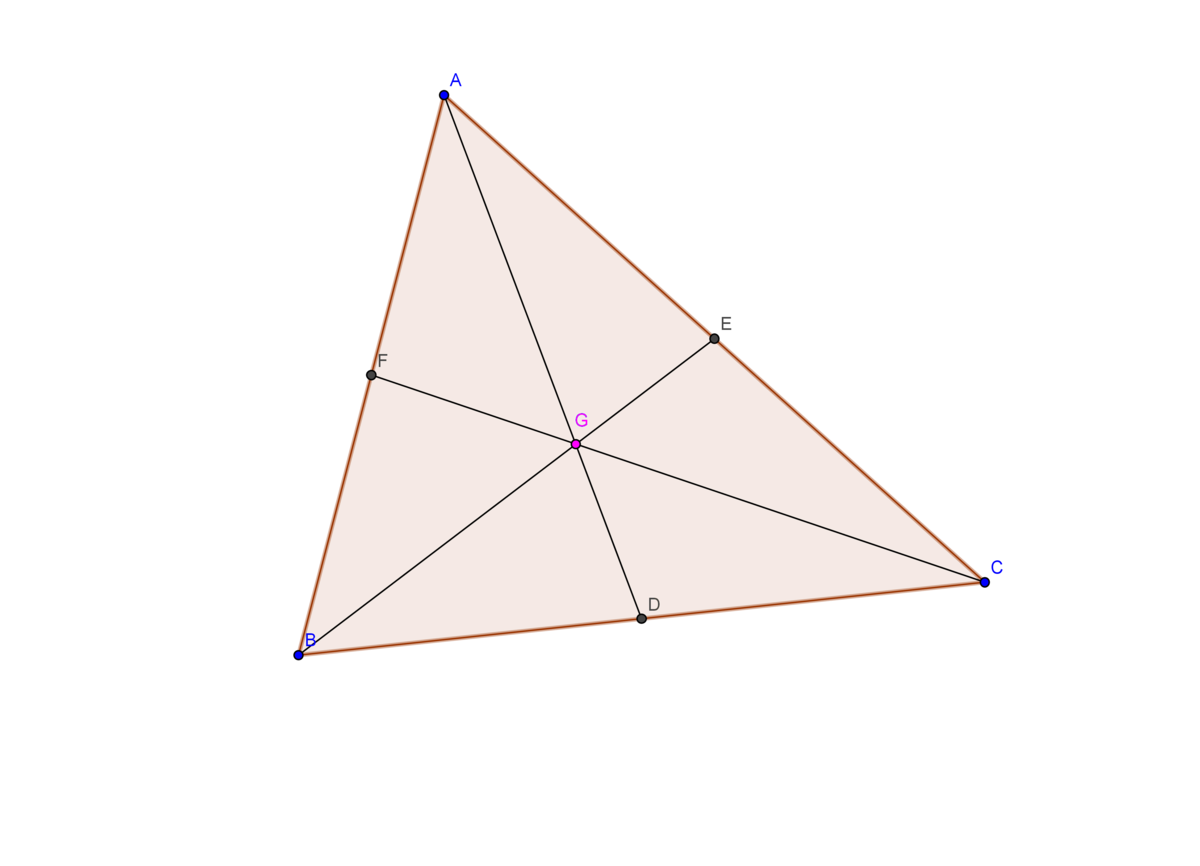
So, it is very easy to prove this. Let and be the medians. We have to prove that is also a median.
From Ceva's Theorem,
But and are the midpoints of and . So, and .
So, . It implies that . So, is the midpoint of which infers that is the median. So, the three medians of a triangle are concurrent.
Excenter:
Excenter is the point of concurrence of external angular bisector of two vertices and internal angular bisector of the third vertex.
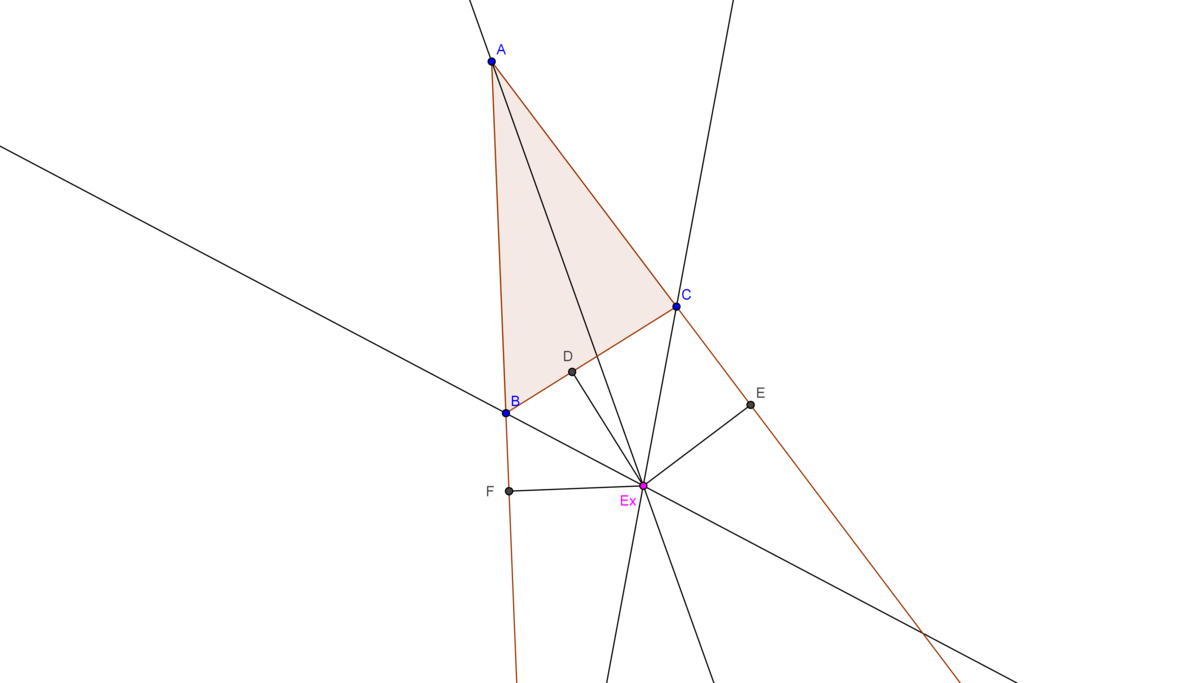
So, Let us prove that these lines are concurrent.
Draw the external angular bisectors of and . Let they meet at . We have to prove that is the excenter of . Draw the perpendiculars , and from onto , and respectively.
As, and , it infers that . So, . Similarly . So, . But . It implies that . So, . It implies that is the internal angular bisector of . Hence, proved.
Till now we had studied about Circumcenter, Incenter, Orthocenter, Centroid and Excenter. Let us move onto some what advanced.
Nine Point Circle:
The nine point circle is named so because it passes through the nine points of the circles . These nine points are:
Midpoint of each side.
The of each altitude.
The midpoint of line segment from each vertex of the triangle to the orthocenter.
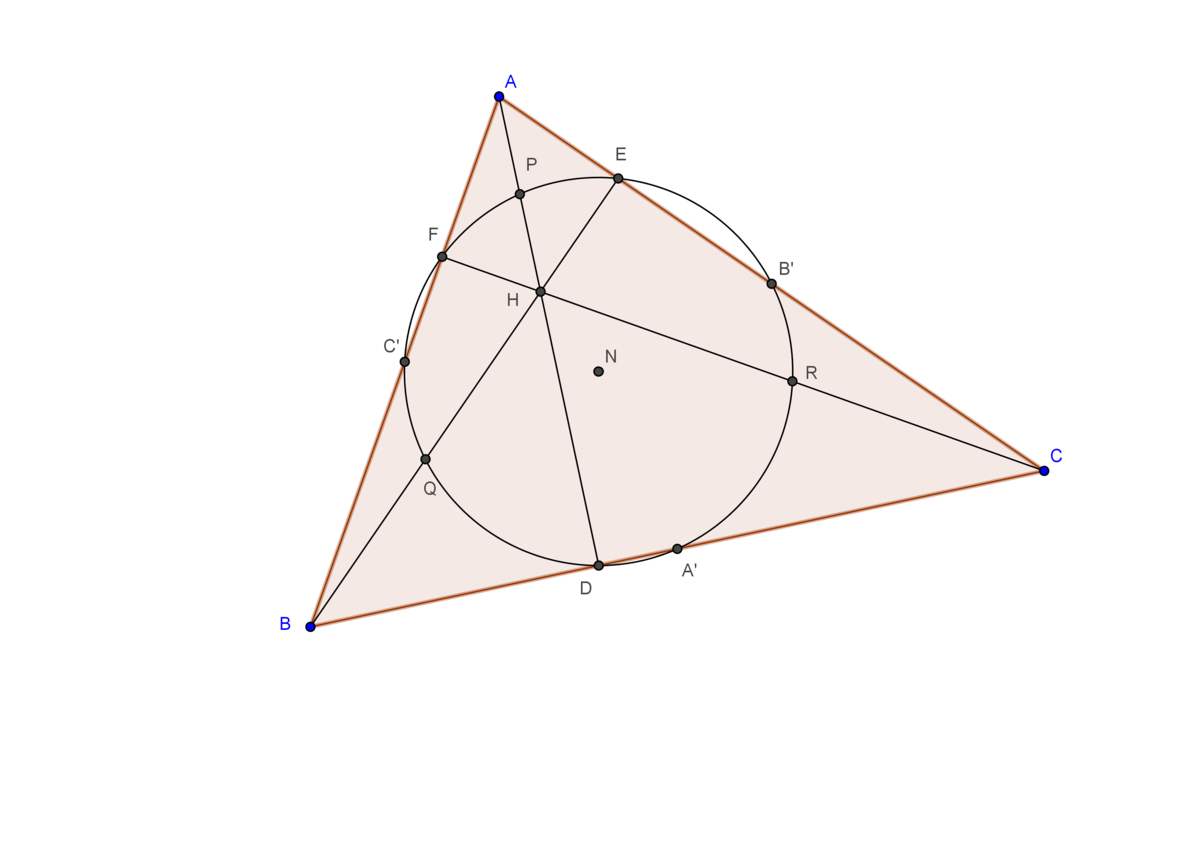
This means that these nine points are concyclic. But how can we say that they are concyclic? Let us prove it.
Consider . Let , and be the altitudes from , and respectively. Let be the mid points respectively.
From, , we get and .
From , we get and .
So, and .
But, , and .
So, and . It implies that is rectangle and so it is cyclic. Similarly, and are cyclic. This forces that are cyclic.
As and (Since we proved before.) It implies that . It forces that is also concyclic with these points. Similarly, are also concyclic with these points. So, are concyclic. Hoofff!!! Done.
Till now we have discussed about Circumcenter, Incenter, Orthocenter, Centroid, Excenter, Nine point center. Now, let us discuss about
Radius of Nine Point Circle.
Relation between Circumcenter, Nine Point Center, Orthocenter and Centroid.
Radius of Nine Point Circle:
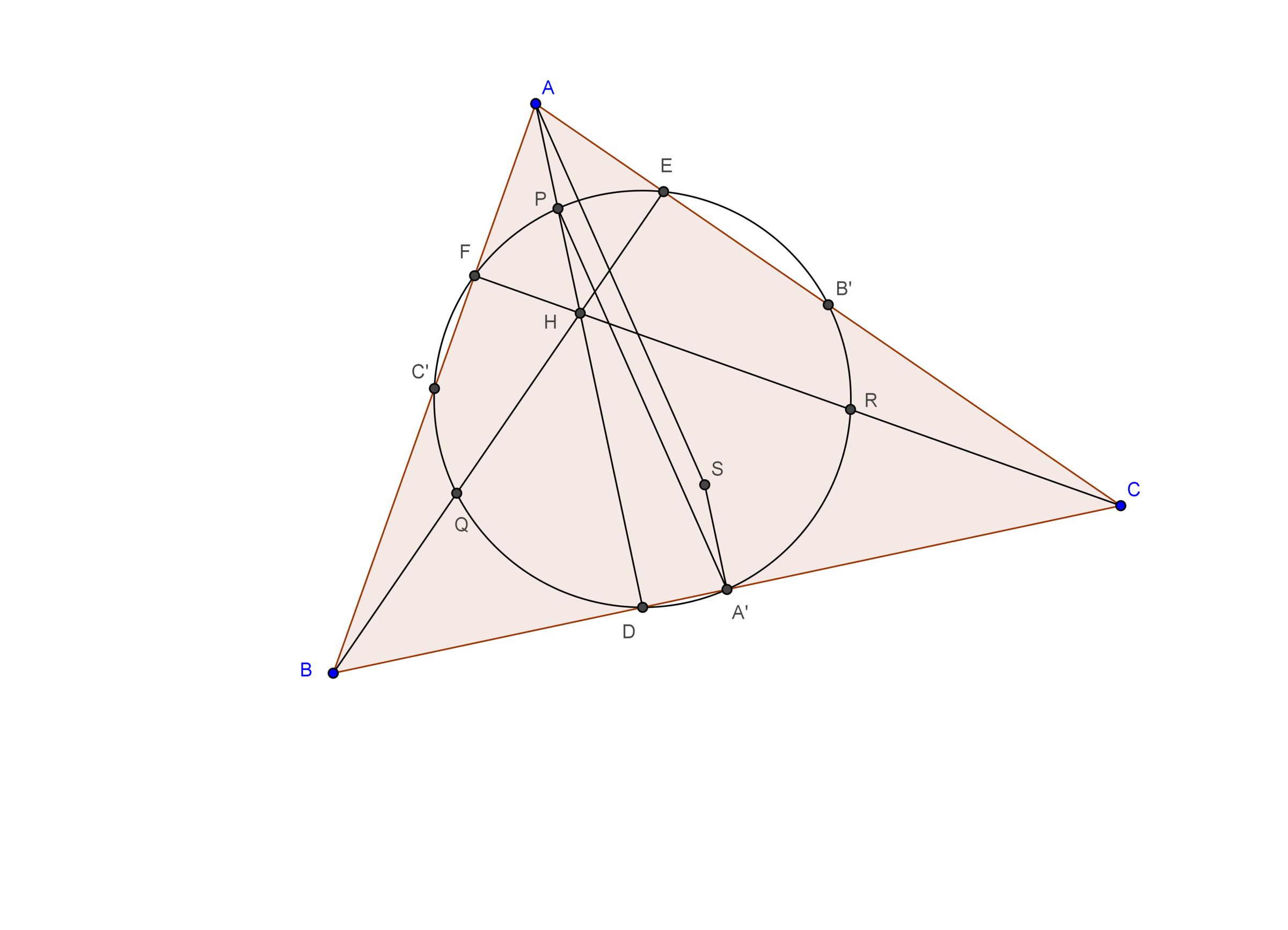
From the fact that radius of circumcircle of rectangle is half the diameter of the rectangle. It is sufficient to find the length of . Because is the diagonal of the rectangle which are on the nine point circle.
Let , and . And let represent . Observe that is cyclic. So, .
But, since angle subtended by the arc at the center is double the angle subtended by the arc at any point on the circle, . As . It implies that . So, .(where 'R' is the circumradius.)
Now, and , it forces that . And, as we proved before that , it infers that is a parallelogram. So, . So the radius of the nine point circle is equal to half the length of which is equal to . Finally, achieved it.
Relation between 'H', 'N','G' and 'S' :
First let us prove that centroid divides the median in the ratio of .

Consider . Let be the medians and let be the centroid. Reflect w.r.t the line and let them be . As and . It implies that is parallelogram. So, . But since . It infers that . But . So, and it infers our result that .
So, how far does this result help us?
Before starting this, Did you observe that nine point center is actually the circumcenter of the triangle formed by joining the midpoints of the sides of the triangle?(But how? Think yourselves.). Let us move on.
Actually, in any triangle the circumcenter, orthocenter, centroid and nine point center lie on the same line. And this line joining them is known as Euler's line.
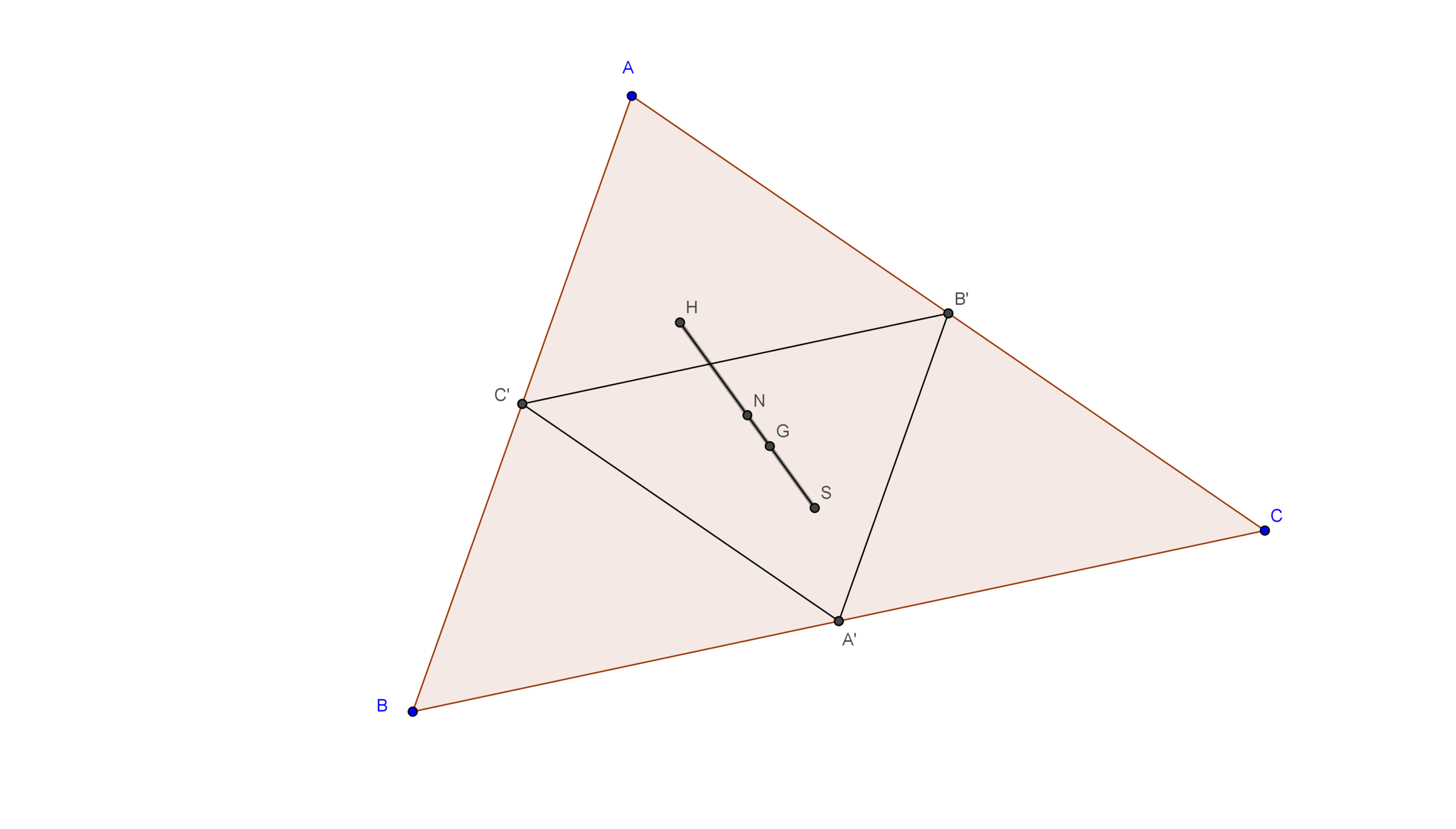
So, the proof for this very interesting. First, observe that and and it implies that . Similarly . It implies that is the orthocenter of which is the circumcenter of .
Now, since . Let us do operation. By squeezing to half and reflecting it w.r.t , we get . Similarly, doing this operation to and , we get and . So, circumcenter of transforms to circumcenter of , i.e. transforms to . So, . We have proved that , and are collinear.
Next, Do the same operations. So, Orthocenter of transforms to orthocenter of ,i.e. transforms to . It infers that .
So, from the above two facts, it implies that . Pheww!! Finally the note is completed.
In this note I had proved all the proofs only considering that the triangle is acute angled. So, it's your turn to try them to prove for obtuse angled triangle.
So, that's all for now. I will post some more advanced topics in a few days or more.
Easy Math Editor
This discussion board is a place to discuss our Daily Challenges and the math and science related to those challenges. Explanations are more than just a solution — they should explain the steps and thinking strategies that you used to obtain the solution. Comments should further the discussion of math and science.
When posting on Brilliant:
*italics*or_italics_**bold**or__bold__paragraph 1
paragraph 2
[example link](https://brilliant.org)> This is a quote# I indented these lines # 4 spaces, and now they show # up as a code block. print "hello world"\(...\)or\[...\]to ensure proper formatting.2 \times 32^{34}a_{i-1}\frac{2}{3}\sqrt{2}\sum_{i=1}^3\sin \theta\boxed{123}Comments
@Calvin Lin @Sanjeet Raria @Nihar Mahajan @Zi Song Yeoh @Sreejato Bhattacharya
Log in to reply
Which will be the next topic?
Log in to reply
May be next topics will be:
Thanks! There is a lot of good information here! Can you add them to the respective wikis of Triangles - Incenter, Triangles - Circumcenter, Ceva's Theorem , Triangles - Centroid, Triangles - Orthocenter , Nine Point Circle etc?
Log in to reply
Of Course!! I will add them Sir.
Hats off! Excellent note! :)
Log in to reply
Thank you
@Surya Prakash Thanks man! This really helped a lot! :D
this is really helpful. Have you posted other notes too?
great service for whom these notes are unknown!